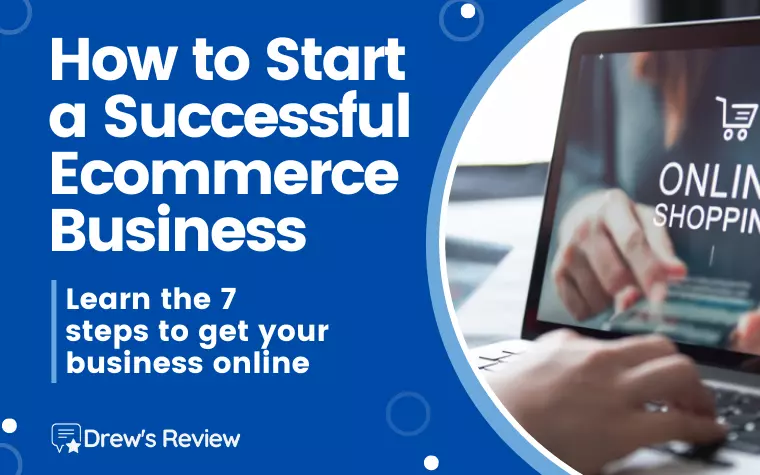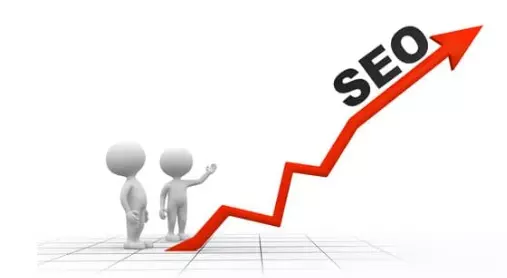
In 2024, eCommerce will be a $5.55 trillion dollar industry.
That's a lot of money up for grabs! If you want to start a successful eCommerce business, now is the time to do it.
In this blog post, I will discuss the steps you need to take to get your business off the ground. I'll also talk about the challenges you will likely face and how to overcome them.
How to Start a Successful Ecommerce Business
There are 7 steps to starting a successful eCommerce business. Let's get started.
STEP 1. Do Research and Choose Your Niche
In order to start a successful eCommerce business in 2024, the first step is to do thorough research and choose your niche. This is crucial because it will determine the direction and focus of your business as well as help you identify potential competitors and market trends.

There are a number of ways to go about conducting this research.
First, you can look at industry reports from reliable sources like trade publications, or you can consult with experts in the field.
These professionals can give you valuable insights into what's popular and what's likely to succeed in the near future. You can also use online platforms like social media or Google Trends to get a sense of what people are searching for online, which may be an indication of upcoming product trends.
Choose a niche that caters to a specific audience or solves a particular problem. This involves doing extensive research on current trends and upcoming opportunities in your market. It's also important to consider whether there is space for another competitor in this niche, as you don't want to be entering an oversaturated market.
Write Your Business Plan
Anyone looking to start an online business in eCommerce in 2024 will need to have a clear and well-thought-out business plan. This document will lay out your goals, strategies, and financial projections, and will serve as a road map for your business.
While it may seem like a daunting task, creating a business plan is actually relatively simple.
The first step is to do your research. You'll need to understand the eCommerce landscape and identify your target market.
Once you've done that, you can start mapping out your plans. What products or services will you offer? How will you reach your customers? What are your long-term goals?

Answering these questions will help you write a comprehensive business plan that will set you up for success.
Look For Products to Sell
Once you have identified the niche you would like to be involved in, it's time to start looking for products to sell. This can be done by scouring online marketplaces like Alibaba, Etsy, and Amazon, or by attending trade shows and talking to manufacturers directly. There are online tools that can help you find products as well.
When searching for products, it's important to keep in mind the needs of your target market as well as any potential competition. You'll want to choose products that are popular with consumers but that isn't already being offered by a lot of other businesses.
It's also important to make sure the products you're considering are high quality and priced competitively. These factors will be important when it comes time to market and sell your products.
STEP 2. Evaluate Your Competition
In order to start an ecommerce business in 2024, it is important to do your research and evaluate your competition.
This means taking stock of the market landscape, including analyzing what products and services currently exist, identifying any current gaps that may exist in the market, and determining who your target customer base will be.

Additionally, it is also crucial to keep an eye on emerging trends and technologies that could potentially shape or even disrupt the eCommerce space.
Check out your competition online to get an idea of what they are offering and how they are marketing their products. You can also visit their brick-and-mortar locations, if applicable, to see how they operate.
In addition to studying your competition, it is also important to understand the current trends in the eCommerce industry so that you can make sure your business is positioned for success. Some things you may want to research include new technologies, changes in consumer behavior, and emerging markets.
By understanding the competitive landscape and keeping up with industry trends, you'll be better equipped to start an ecommerce business in 2024.
STEP 3. Start Building Your Store and Business
There are a few steps you need to take after you have evaluated your competition and chosen your niche.
Register Your Ecommerce Business & Brand Name
You should first check to see if you legally need to register your eCommerce business and brand name. Depending on your business model and where you're located, this may be a requirement. You can typically do this through your local government's website or by consulting with an attorney.
In most cases, you won't need to, and you can just run your business as a sole proprietorship. You can always incorporate it later once your business takes off. That's exactly what I did with my first store. I didn't register it until after it started doing well. But again, your situation might be different depending on where you live, so do your due diligence.

When registering your online business, it is important to choose a legal structure that will provide the protection you need while also allowing for flexibility as your company grows.
Options include sole proprietorship, partnership, corporation, and LLC. Next, you will want to choose a catchy and memorable brand name that resonates with your target customers. This can be done by researching what competitors are already doing and thinking about the values that you want your company to represent.
Tips for Choosing Your Store Name
Choosing the right name for your eCommerce business is essential for success. Not only does it need to be memorable and unique, but it also needs to accurately reflect your brand.
With that in mind, here are a few tips to help you choose the perfect name for your eCommerce business:
Step 1
Keep it short and sweet. A shorter name is easier to remember and less likely to be misspelled.
Step 2
Make it relevant. Choose a name that accurately reflects what you sell and who your target audience is.
Step 3
Avoid using numbers or hyphens. These can make your name difficult to remember and pronounce.
Step 4
Do your research. Make sure the domain name for your chosen name is available before you make any final decisions.
Step 5
Get creative. Brainstorm with friends, family, and fellow entrepreneurs to come up with something truly unique.
Step 6
Trust your gut. At the end of the day, the best name for your eCommerce business is the one that feels right to you.
Create Your Logo
Your logo is one of the first things potential customers will see when they visit your eCommerce store,
First, start by brainstorming what kind of message you want your logo to convey.
Is your brand playful or serious? Contemporary or traditional? Once you have a general idea of the tone you want to set, you can begin sketching out some ideas. It can be helpful to look at other logos for inspiration, but be sure to avoid simply copying someone else's work. The best logos are those that are truly original.

Once you have a few ideas sketched out, it's time to start refining them. Simplicity is key when it comes to logos, so try to distill your idea down to its essential elements.
In many cases, less is more. Once you've settled on a final design, it's important to have it professionally created by a graphic designer.
This will ensure that your logo looks its best when it's used on your website and marketing materials.
If you'd rather create it on your own but with some help, you can also try out a logo maker app.
It's important to make a good impression. Here are some tips for creating a logo that will help your business stand out:
Step 1
Keep it simple. A complex logo can be difficult to remember, and it may not reproduce well at different sizes. Stick to a few basic shapes and colors that can be easily recognized.
Step 2
Make sure it's relevant. Your logo should be reflective of what your business does. If you sell products for children, for example, use playful colors and fonts.
Step 3
Consider animation. An animated logo can help your business appear more modern and dynamic. Just make sure the animation is subtle and doesn't distract from the overall message of your logo.
Step 4
Use negative space. incorporating negative space into your logo design can create an eye-catching and memorable image.
Choose Your Theme
The way how your store will be laid out is important to the success of your business. There are many platforms to choose from, and the options can be overwhelming. But don't worry, I'm here to help!

Here are a few things to consider when choosing a theme for your eCommerce store:
Your products: What type of products will you be selling? Physical goods or digital downloads?
Your target market: Who are you selling to? Men, women, children, businesses, or a combination thereof?
Your budget: How much are you willing to spend on your store's design?
Your skills: Do you have the technical skills required to edit HTML/CSS code? Or would you prefer a platform that is more user-friendly?
Once you've considered these factors, it's time to start looking at themes. Your eCommerce theme should be:
It is important that your customers can find what they are looking for easily, without getting frustrated. If you are not sure which theme to choose, there are many resources available online that can help you compare different options and make a decision.
Once you have chosen a theme, it is important to customize it to reflect your brand's unique identity. This can be done by adding your logo, choosing specific colors and fonts, and adding custom images and graphics. By taking the time to personalize your store's appearance, you will create a more professional and cohesive look that will appeal to customers.
For eCommerce, I suggest going with Shopify.
They are a user-friendly platform with a wide range of themes to choose from. Plus, they offer 24/seven support in case you need any help along the way. They also have plenty of free themes and apps to choose from which is great if you're on a budget.
Build Your Site With SEO in Mind
When you're building an eCommerce store, it's essential to keep SEO in mind.
Optimizing your site for search engines will help ensure that your products are easily discoverable by potential customers. To get started with SEO and eCommerce, one key step is to include clear, descriptive titles and descriptions for each of your products.
Including relevant keywords in these fields can also help boost your rankings in search results, so be sure to research what keywords are most commonly used by your target audience.
You should also think carefully about the structure of your site overall; focusing less on generic categories and more on optimizing individual product pages can give you a significant advantage when it comes to SEO.
Whether you're just starting out or want to take your existing store to the next level, the key to success with SEO and eCommerce is to consistently put quality content front and center.
With careful planning and ongoing effort, you can build a strong presence online that will drive business growth for years to come.
Create a Blog
A lot of eCommerce stores do not include a blog on their website. This is a mistake!
Blogging is a great way to connect with your customers, build trust and credibility, and drive traffic to your site. Not sure what to write about? Here are some ideas:
Blogging is a powerful marketing tool that should not be overlooked. By taking the time to create quality content, you can attract new visitors to your site and convert them into loyal customers.
Most platforms allow you to create a blog on your ecom site. You just need to include the tab named "Blog" in your menu bar so your readers can find it.
STEP 4. Choose the Right Vendors
When starting a new eCommerce business, the first step is always choosing the right vendors. This is an incredibly important decision, as it will determine the quality and affordability of your products as well as the reliability and dependability of your suppliers.
There are several key things to look for when selecting vendors for your business.
First, it is essential to consider their reputation and past performance. Do they have a history of quickly delivering high-quality products on time?
Looking at customer reviews can also provide valuable insight into what to expect from them.
Another important factor to consider is whether or not they are trusted and credible, with references or accreditations from reputable organizations serving as good indicators.
When assessing potential vendors, it's also important to look at other factors that may impact their ability to work with you effectively. Things like communication style, tech support capabilities, and responsiveness are all crucial considerations that can have a big impact on your overall experience working with them.
And ideally, you'll want someone who works in partnership with you rather than simply providing a service, as this type of collaborative approach often leads to better results for both parties involved.
Location is also a factor to consider, as working with local vendors can often be more convenient and efficient.
However, don't rule out the possibility of working with international suppliers; in many cases, they can provide better pricing and lead times. The key is to carefully assess all potential vendors to find the best fit for your specific needs.
STEP 5. Populate Your Store With Products
Once you have chosen the first products you would like to promote, it's time to add them to your store.

For this example, I am going to assume you are using Shopify. You can do this by going to the "Products" section of your Shopify admin and clicking "Add product."
From there, you will be able to add a product title, description, price, and images. Be sure to fill out as much information as possible so that potential customers know what they are buying. Once you have added all of the necessary information, click "Publish product."
Repeat this process for each product you would like to sell in your store. Remember to regularly check in on your products and update their information as needed!
Tips for Adding Products to Your Shopify Store
There are many different strategies for adding products to your Shopify store. Here are some tips that can help you to increase the effectiveness of your product listings and attract more customers:
1. Start by clearly defining and describing your ideal customer. Who are you trying to target with your product lineup, and what do they care about most? Identify these common factors and use them as a guide when creating your product listings.
2. Pay attention to keywords and search terms. Make sure that you use relevant terms that will help shoppers to find your products when they search on sites like Google or Amazon. This means including industry-related words, product names, competitor brand names, etc. in your descriptions and titles.
3. Invest some time in optimizing the images for each of your products. Use high-quality photos that clearly show off the details of each item, and include captions or custom text whenever possible to give potential buyers important information about sizing, materials, color options, etc. This will make it easier for shoppers to understand what each item is all about and decide whether or not it is right for them.
4. Don't be afraid to get creative! Incorporate visual elements like video reviews or user-generated content (e.g. customer photos) into your product listings to really capture the attention of potential buyers. This can be an effective way to show off the unique selling points of each item in your store.
By following these tips, you can create product listings that are more likely to attract attention and result in sales. Remember to keep your target customer in mind throughout the process so that you can create listings that appeal directly to their needs and interests while they do their online shopping.
STEP 6. Launch Your Store
Now that you have added all your products, wrote all your descriptions, and added all your amazing pictures, it is time to launch your store!
You can do this by going to the "Settings" section of your Shopify admin and clicking on the "General" tab. From there, scroll down to the "Store status" section and click the button that says "Launch store."
Once you have launched your store, anyone will be able to access it and purchase your products.
If you are not using Shopify, the process for launching your store will be different. However, most eCommerce platforms will have a similar launch process that is relatively simple to follow.
What's next?
Now that you have launched your store, it is time to start promoting it.
STEP 7. Promote Your Store
There are many different ways to promote your eCommerce store. Some common methods include:
1. Social Media

Social media is a powerful tool that can be used to promote just about anything - including an eCommerce store. By creating a social media profile for your store, you can reach a wider audience and drive traffic to your website.
Here are a few tips for using social media to promote your eCommerce store:
1. Use high-quality images: People are visual creatures, so make sure the images you use are eye-catching and professional-looking.
2. Use compelling copy: Write copy that is clear, concise, and persuasive. Use persuasive language to entice people to visit your store.
3. Offer discounts and coupons: Everybody loves a deal, so offer discounts and coupons to your social media followers. This will give them an incentive to visit your store.
4. Host giveaways: Hosting a giveaway is a great way to generate buzz around your store. Just make sure the prize is something that your target audience would be interested in.
5. Be active: One of the most important things you can do on social media is to be active. Post regularly, respond to comments and questions, and like and share other people's content. The more active you are, the more likely people
2. Paid Advertising

Paid advertising is a great way to promote your eCommerce store and drive traffic to your website.
There are a number of different platforms that you can use for paid advertising, including Google AdWords, Bing Ads, and Facebook Ads. Each platform has its own strengths and weaknesses, so it's important to choose the one that best suits your needs.
For example, Google AdWords is great for targeting potential customers who are already searching for products like yours, while Facebook Ads is more effective for reaching out to potential customers who might be interested in what you have to offer.
Paid advertising can be a great way to get started with promoting your eCommerce store, but it's important to remember that it's only one part of a larger marketing strategy.
You'll also need to focus on building up your brand and creating valuable content that will help you attract organic traffic from potential customers who are already interested in what you have to offer.
3. Content Marketing
Content marketing is an extremely effective tool for promoting your eCommerce store online.

By creating and sharing interesting, relevant content such as blog posts, videos, and infographics, you can attract new customers, build trust with existing customers, and establish your brand as an industry leader.
To get the best results from your content marketing efforts, it is important to include both informational and promotional content on your website. This will help to educate visitors about your products or services while also highlighting why they should choose to buy from your store over competitors.
Additionally, you should be actively engaging with users on social media and other online channels to drum up buzz around your brand. With a well-executed content marketing strategy, you can significantly boost traffic to your eCommerce store and increase sales in the process!
4. Search Engine Optimization (SEO)

When it comes to promoting your eCommerce store, there are a variety of strategies you can use. One of the most effective is search engine optimization or SEO.
By optimizing your website for search engines, you can improve your visibility, attract more traffic, and ultimately boost sales.
There are a number of different techniques you can use to optimize your site, but some of the most important include choosing the right keywords, optimizing your titles and meta descriptions, and creating quality content.
If you’re not sure where to start, there are a number of resources available online that can help you get started with SEO. With a little effort, you can see a big return on investment from SEO—so it’s definitely worth giving it a try.
5. Email Marketing

Email marketing is one of the most effective ways to promote your eCommerce store. By building a list of potential customers and engaging them with regular email updates about new products, special offers, and discounts, you can help to keep your store at the front of their minds.
Additionally, email marketing allows you to carefully track the performance of your promotional efforts, enabling you to adjust your strategy as needed and optimize your ROI.
Whether you're interested in traditional email blasts or more targeted marketing strategies like drip campaigns, there are plenty of tools available to help you create and manage successful email marketing campaigns that drive sales for your eCommerce store.
It is important to experiment with different promotional strategies to see what works best for your business. There is no one-size-fits-all solution, so it is important to find the approach that resonates most with your target audience.
How to Start a Successful Ecommerce Business Conclusion
Starting your own eCommerce business can be a great way to make money and build a successful business.
By finding good products, getting a trusted supplier, using a good platform for your store, and promoting it with a variety of methods, you can set yourself up for success.
What are you waiting for? Start building your eCommerce empire today!
Frequently Asked Questions
Is it hard to be successful in eCommerce?
There is no easy answer to the question of whether it is hard to be successful in eCommerce. Some might argue that success depends heavily on factors such as perseverance, adaptability, and good judgment. On the other hand, others might contend that there are some key skills and strategies that are essential for success in this increasingly competitive marketplace.
Can you make good money in eCommerce?
While there are no guarantees in any business, eCommerce can be a very profitable venture. Many eCommerce businesses make millions of dollars in revenue each year. Of course, the amount of money you can make will depend on a number of factors, such as the products you sell, your target market, your investment and your marketing efforts.
Which e-commerce Business is most profitable?
The most profitable business will vary depending on a number of factors, such as the products you sell, your target market, and your marketing efforts. That said, some businesses are more profitable than others. For example, businesses that sell high-end products or services, have a niche target market and employ effective marketing strategies tend to be more profitable than those that don't.
How can I be successful in eCommerce?
You can be successful in eCommerce by finding good products, getting a trusted supplier, using a good platform for your store, and promoting it with a variety of methods. Additionally, it is important to experiment with different promotional strategies to see what works best for your business. There is no one-size-fits-all solution, so it is important to find the approach that resonates most with your target audience.
What are the 5 most important things to know before starting an e-commerce business?
It's important to know a few things before starting an eCommerce business. Firstly, you need to identify a good product or service to sell. Secondly, you need to find a reliable supplier for your products. Thirdly, you need to choose a good platform on which to build your store. Fourth, you need to come up with a promotional strategy. And fifth, you need to be prepared to experiment and adjust your approach as needed. By taking these things into consideration, you can set yourself up for success.
What are the 4 types of eCommerce businesses?
The 4 types of eCommerce businesses are Business-to-Consumer (B-to-C), Business-to-Business (B-to-B), Consumer-to-Consumer (C-to-C), and Consumer-to-Business (C-to-B). Each type of eCommerce business has its own unique set of challenges and opportunities.
Is Dropshipping the same as eCommerce?
Dropshipping is a type of eCommerce business model in which businesses sell products that are sourced from a supplier. Dropshipping is different from other types of eCommerce businesses because the business does not need to carry inventory.
Instead, when a customer orders a product, the business will purchase the item from the supplier and have it shipped directly to the customer's door. To learn how to start a dropshipping business, check out this article.
Like this article? Share it with your friends!
You might also like...
- How I Make Faceless YouTube Channels With AI - April 9, 2024
- Top 21 Faceless YouTube Niches to Earn Big Profits in 2024 - April 3, 2024
- Dave Nick YouTube Automation Systems Review 2024 - March 28, 2024

Hi I REALLY like your website its really helpful in this crazy online world. I wondered if you had researched Gearbubble V say Shopify. I am literally loosing my mind trying to decide which site to go with. I want a site I can easily input my own designs from say a Canva site, rather than using what they want me to use ie there own site eg Shopify.
Hi Linda, I prefer the flexibility of Shopify. You can pick any theme whether it’s free or paid and you can upload any images you wish. Shopify doesn’t tell you what you can and cannot use.